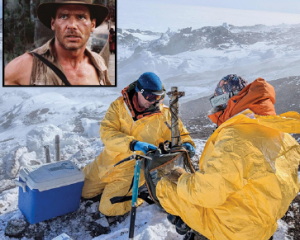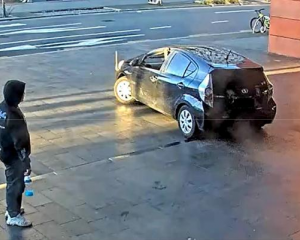Ambulances will no longer be sent to minor 111 calls as part of sweeping changes to help stem St John's $15 million-a-year loss.
Instead, such calls will be redirected to a GP or other health care, or a St John officer will be sent in a car - not a double-crewed ambulance.
St John's annual operating loss has nearly doubled from $8 million in five years, and ambulance bosses say that is unsustainable.
A steadily increasing number of elderly people with chronic illnesses has paramedics struggling to cope with an annual 4.5 per cent increase in demand.
Last year, the ambulance service received a record 337,000 emergency callouts.
A Herald investigation has also revealed that the overstretched workforce is facing daily dangers.
One example was a female ambulance officer who was hijacked by two teenagers while she worked alone.
Response times to 111 callouts have also deteriorated - particularly in urban areas - and will continue to do so unless the service's cash shortage is addressed by the Ministry of Health and ACC, said St John's operations manager Michael Brooke.
"There's a brick wall coming," he said. "But that's true of the health sector in general."
Under the new system, "non-urgent" 111 calls will be coded "grey" or "green".
They will include abdominal pain, allergies, animal bites, assaults, back pain, falls, headaches, exposure to cold, lacerations, and feeling sick.
The Ministry of Health and the Accident Compensation Corporation pay 80 per cent of St John's funding, totalling $223 million in the 2010/11 financial year.
Mr Brooke said St John was working with the two Government funders, but was also changing the way its ambulance service is run.
Ambulances are now sent to geographic zones based on predicted demand, calculated from call data, rather than returning to the station when a job is finished.
"We got through winter that way. With the same number of staff, we've mopped up the 4.5 per cent growth. If we had to put more staff on, that would have cost us $2 million."
Mr Brooke and Neil Chapman, of the First Union which represents more than 1000 ambulance staff, agreed that staff get "flogged" every winter.
Most of the extra 100 paramedics paid for by the Government were placed in the provinces, but Mr Chapman said more crews were needed in Auckland and other urban centres.
One problem Mr Chapman said the union was discussing with members and St John management was regular breaks during their 12 hour shifts.
Ambulance staff were supposed to have a break every 5 hours, but that was not always possible because of their heavy workloads.
"We've got to go because it's an emergency. That's fine but if you keep going and going ... If we had enough crews, we wouldn't be in this position."
Another change to reduce the workload is in the way 111 calls are handled.
"A lot of people don't need to be transported to hospital," said Mr Brooke. "At the moment, we send a big white truck with two people in it. That means an ambulance is tied up."
"This is not about turning people away, it's about sending them to the right place."
He said 10 to 15 per cent of all emergency calls were non-urgent.
"That's a massive part of our workload. If we can reduce that, we can concentrate on getting to the life-threatening calls quicker."
A trial of the new system will start in Christchurch next month, with a view to introducing it throughout the country.
But Mr Brooke said the changes would only "buy us some time".
"We think we can buy two years," he said.
"Our view ... is that response times will get worse unless more money goes into ambulances."
The National Ambulance Sector Organisation was set up after a health select committee inquiry into ambulance services as a joint project between the Ministry of Health and ACC.
One of its main recommendations was to set up a streamlined funding system, which a ministry spokesman said would start next year.
But no significant funding increases were planned, the spokesman said.
"St John is making excellent progress with introducing new ways of working that will enable it to manage demand growth within existing resources."













